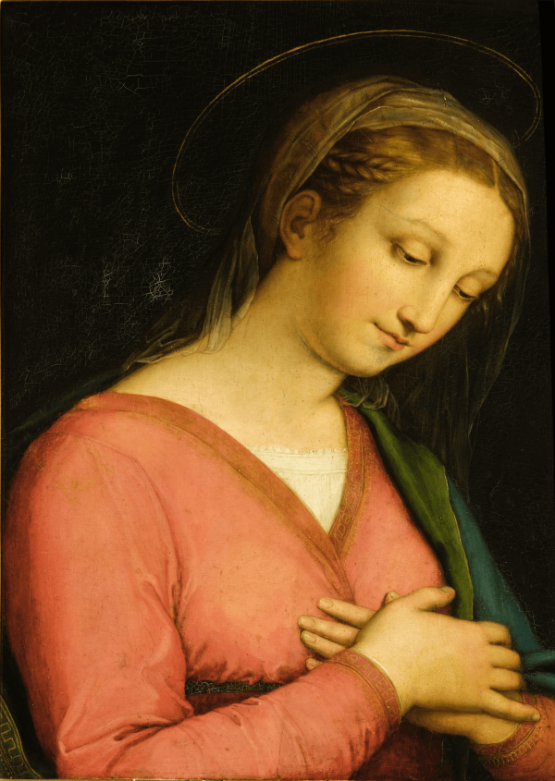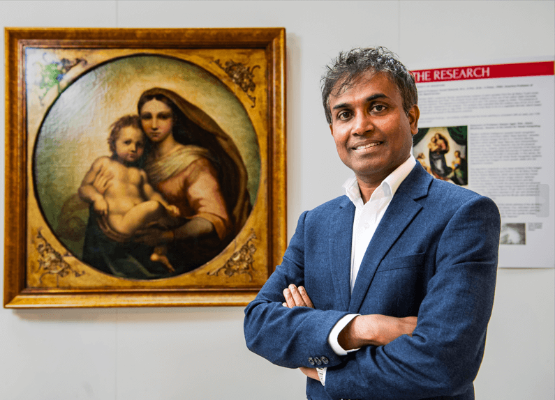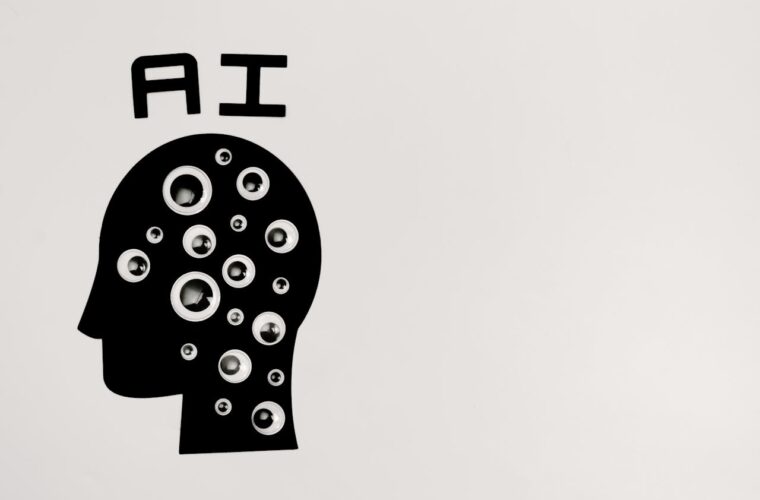An AI algorithm developed at the University of Bradford may have unravelled the mystery surrounding Madrid’s Prado gallery masterpiece.
Professor Hassan Ugail, Director of the Centre for Visual Computing and Intelligent Systems, has created an AI algorithm boasting a 98% accuracy rate in authenticating works by Raphael. The Madonna della Rosa was scrutinized using deep feature analysis, revealing that while most of the painting is likely by Raphael, the face of Joseph may be the work of a different artist.
A paper titled “Deep Transfer Learning for Visual Analysis and Attribution of Paintings by Raphael,” co-authored by Professor Ugail, Professor Howell Edwards, Professor Christopher Brooke, and Adjunct Professor David G. Stork from Stanford University, has been published in the Heritage Science journal.
Professor Ugail expressed confidence in the AI algorithm’s ability to classify an image as an authentic Raphael work with 98% accuracy. Notably, when testing the entire Madonna della Rosa, results were inconclusive, prompting a focused examination of individual components. The analysis determined that while the majority of the painting is attributed to Raphael, Joseph’s face is likely not his creation.
“When you present an image to the computer, it will give a binary classification of whether it’s an authentic Raphael or not, with 98 percent accuracy. Now we can say with great confidence whether a painting is an authentic Raphael or not. When we tested the della Rosa as a whole, the results were not conclusive. So, then we tested the individual parts, and while the rest of the picture was confirmed as Raphael, Joseph’s face came up as most likely not Raphael,” Professor Ugail noted.
Previously, Professor Ugail utilized AI-assisted facial recognition on the de Brécy Tondo, resembling Raphael’s Sistine Madonna. The algorithm, which considers the entire painting holistically, affirmed the work as Raphael’s, building on pigment analysis by Professor Howell Edwards.
Madonna della Rosa
The Madonna della Rosa, housed in the Museo del Prado, has puzzled art experts, with some suggesting contributions from Raphael’s pupil Giulio Romano. However, Professor Ugail’s analysis indicates that the lower part of the painting is most likely by Raphael, shedding light on the intricacies of the artist’s style, from brushstrokes to colour palettes.
Addressing concerns about job displacement, Professor Ugail emphasized that the algorithm complements the art authentication process, providing a valuable tool alongside considerations such as provenance, pigments, and the work’s condition.


AI and the Haddo Madonna
Another artwork subjected to Professor Ugail’s testing is the ‘Haddo Madonna,’ located in Haddo House, Aberdeenshire, under the management of the National Trust for Scotland. Originally believed to be a genuine Raphael, it was acquired by George Gordon, the 4th Earl of Aberdeen and Prime Minister from 1852 to 1855. Subsequently, doubts arose, and the painting was attributed to Innocenzo da Imola. In 1899, it received a valuation of merely £20, equivalent to just over £2,000 in today’s currency. In 2016, historian Dr Bendor Grosvenor asserted on BBC’s Britain’s Lost Masterpieces that the painting was a Raphael creation, a claim disputed by experts at The National Gallery, London.
Professor Ugail’s algorithm supports Dr. Grosvenor’s assertion that the ‘Haddo Madonna’ is likely a work by Raphael.
In further testing, Professor Ugail enlisted painter Steven Seward to recreate a Raphael self-portrait. Despite the remarkable similarity between the two paintings, the algorithm, based on deep transfer learning for visual analysis and attribution of paintings by Raphael, deemed Seward’s work as not authentically Raphael. This additional experiment highlights the algorithm’s discernment in differentiating genuine and replicated artworks.
The findings and methodology of these tests, co-authored by Professor Ugail, Professor Edwards, Professor Chris Brooke from the University of Nottingham, and Stanford University Adjunct Professor David G. Stork, have been published in a peer-reviewed paper titled “Deep Transfer Learning for Visual Analysis and Attribution of Paintings by Raphael” in the Heritage Science journal.



